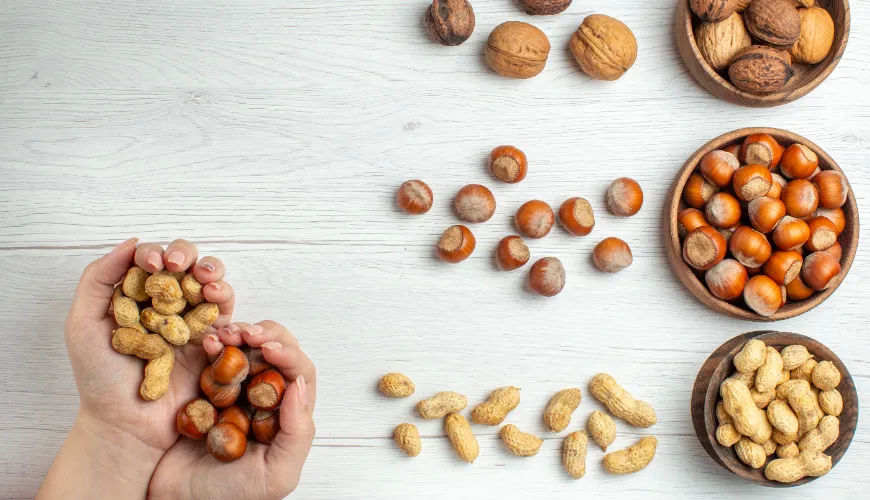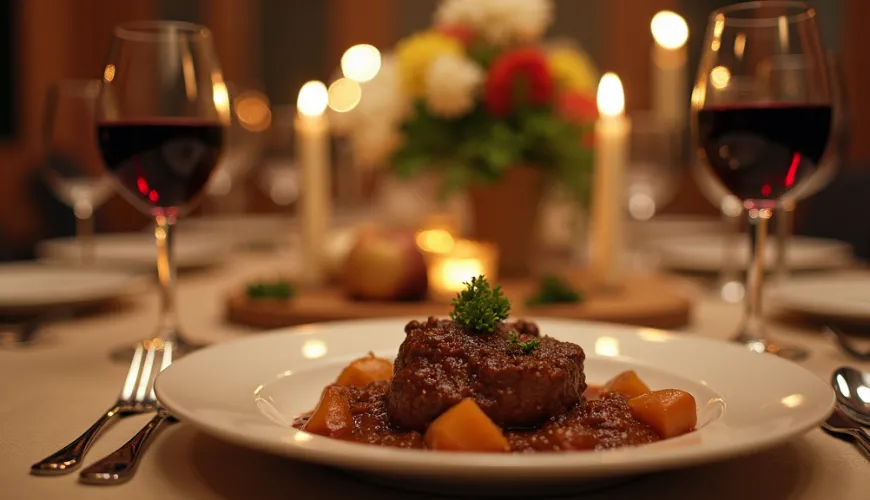
Beef Ragout That Warms Your Soul and Takes You Home

Beef Ragout – A Slowly Stewed Classic That Smells Like Home
The aroma of simmering meat, the sweetness of caramelized onions, and the depth of red wine. When the scent of beef ragout wafts through the kitchen, time slows down. This dish carries something archetypal – a harmony of flavors that speaks of patience, home, and a love for good food. Perhaps that's why beef ragout has become a beloved dish in many European families. Whether you choose beef ragout with wine, root vegetables, or perhaps in its simplest form, it will always warm your soul.
What Does "Ragout" Actually Mean?
The origin of the word "ragout" comes from the French "ragoût," which means stewed meat or vegetables in their own juice or sauce. This technique gradually spread throughout Europe and found its place in Central European cuisine. Ragout today is no longer the privilege of French masters – on the contrary, you can find it in Italian, Hungarian, and even Czech households.
The magic of a properly prepared beef ragout lies in the combination of quality meat, aromatic vegetables, and patient stewing. Time is a key ingredient here. Quick meals have their place, but ragout is a celebration of slow cooking. The longer it cooks, the more the flavors meld, and the dish gains a depth that is unmatched.
Beef Round – The Foundation of a Genuine Ragout
One of the most commonly used cuts for preparing ragout is beef round, which, when properly cooked, becomes tender and absorbs all the flavors that ragout offers. The hindquarter of beef, often referred to as the "rump," has a low fat content but enough collagen, making it ideal for long stewing.
When selecting meat, it's good to look for local farmers or organic butcheries. Meat from pasture-raised animals not only tastes better but is also a more nutritious and eco-friendly choice. The fewer the interventions between the farm and your plate, the better – for the planet and for the taste experience.
Vegetables as the Flavor Base
Beef ragout with root vegetables is particularly popular in Czech households. Carrots, celery, and parsley form a traditional trio that creates a rich flavor base. When sautéing vegetables, natural sugars are released, which soften the entire dish and add fullness.
This makes beef ragout with vegetables a great option for those looking to reduce fat intake or seeking a healthier alternative to heartier dishes. Although it's a meat dish, the vegetable content forms a significant part and ensures balance.
Red Wine – The Secret to Depth and Elegance
One iconic way to elevate the flavor of ragout to a new level is by adding quality red wine. Beef ragout with wine is a symbol of elegance and culinary refinement. During cooking, the wine loses its alcohol but leaves behind complex flavor notes – from fruity to earthy oak.
When choosing wine, there's no need to reach for the most expensive bottle, but it's worth using one you would gladly drink on its own. As French chefs say: “Don't put into the food what you wouldn't drink.” Wine not only tenderizes the meat but also brings all the flavors together into a harmonious whole with a head and a tail.
How Does Ragout Preparation Look in Practice?
Imagine a Saturday morning. It's snowing outside, time passes slowly. On the cutting board, onions are being chopped, a drop of olive oil is added to the pot. The beef is briefly seared to lock in the juices. Meanwhile, vegetables are gradually added – first root vegetables, then tomatoes, garlic, herbs. Finally, everything is poured with wine and broth, covered, and left to stew for three hours on low heat.
The result? Tender, juicy meat, a sauce full of flavor, and an aroma that will bring even the staunchest opponents of slow food to the table. And what to serve with it? Ragout pairs excellently with homemade bread, mashed potatoes, or fresh pasta. In the Italian version, it is often served with pappardelle or tagliatelle, while in the Czech take, with potato dumplings or barley risotto.
Why Is Beef Ragout So Popular?
Perhaps because everyone can customize it to their liking. Some add more spices, others add mushrooms or a pinch of chili. Some cook ragout in the oven, others in a slow cooker. Either way, the dish has the advantage that it matures over time. It tastes even better the next day than freshly cooked because the flavors meld even more intensely.
Moreover, it is a dish that brings people together – both literally and metaphorically. It's not a quick dinner on the go, but a feast that invites you to sit down. It offers space for sharing, storytelling, laughter. Perhaps that's why it often appears on family tables during festive occasions and ordinary Sundays.
Where to Find Inspiration?
There are countless recipes for beef ragout. Every cuisine has its version, and every cook has their trick. Italian cuisine offers, for example, Tuscan ragout with tomatoes and pancetta, the French variant from the Burgundy region relies on strong red wine and shallots. Czech recipes often make use of root vegetables and the Bohemian style of stewing.
If you're interested in tried-and-true recipes with a story, it's recommended to look at blogs focused on slow cooking or traditional cuisine. For example, Lidl Kitchen or Apetit Online often provide quality recipes that are clearly written and at the same time tastefully sophisticated.
A Small List for Inspiration:
- Beef Ragout with Red Wine and Thyme
- Ragout from Beef Round with Carrot and Celery
- Beef Ragout with Tomatoes, Garlic, and Basil
- Slowly Stewed Beef on Root Vegetables with Cloves and Allspice
Each of these recipes can be the beginning of a new family ritual, passed on – from grandmothers to grandchildren, from friends to neighbors.
In a time when many things are rushed, slowly cooked food is reclaiming its place in our lives. Because some dishes cannot be rushed – and that's precisely where their charm lies. Ragout is not just a recipe. It's a way to remind ourselves that good things mature over time.

